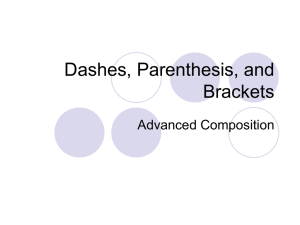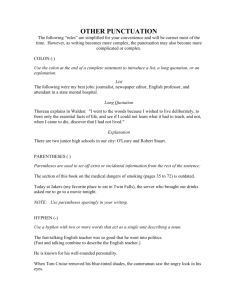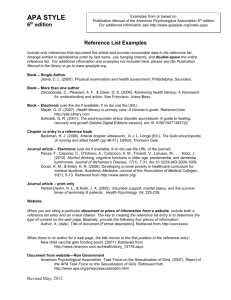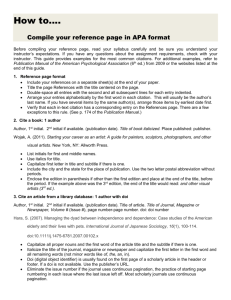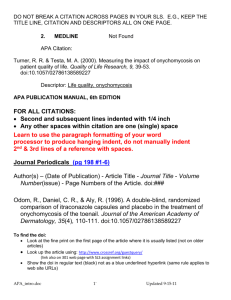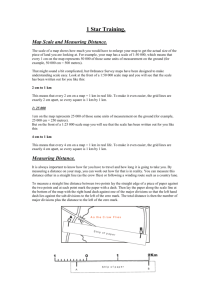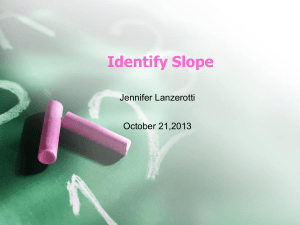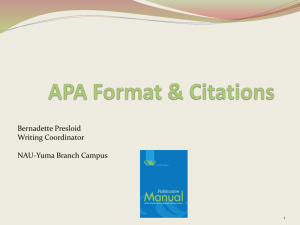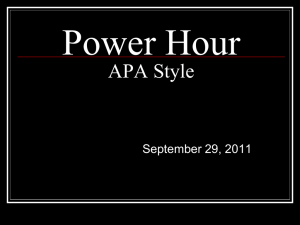To: Ph.D. students From: Jay Brandes. Global Campus Librarian
advertisement
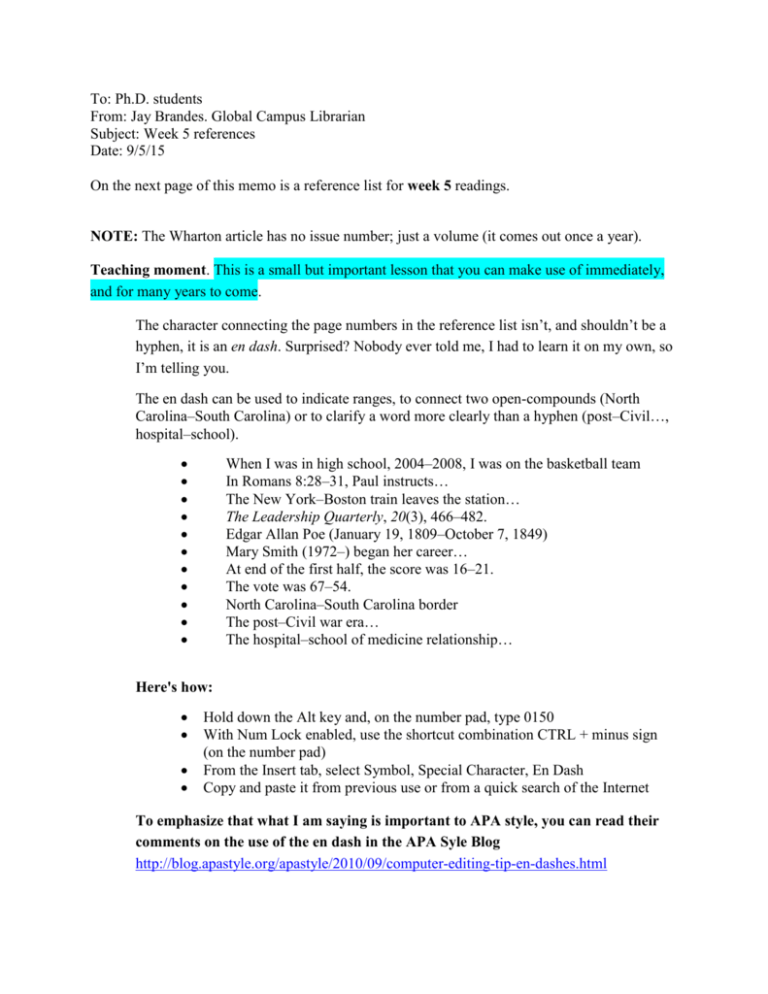
To: Ph.D. students From: Jay Brandes. Global Campus Librarian Subject: Week 5 references Date: 9/5/15 On the next page of this memo is a reference list for week 5 readings. NOTE: The Wharton article has no issue number; just a volume (it comes out once a year). Teaching moment. This is a small but important lesson that you can make use of immediately, and for many years to come. The character connecting the page numbers in the reference list isn’t, and shouldn’t be a hyphen, it is an en dash. Surprised? Nobody ever told me, I had to learn it on my own, so I’m telling you. The en dash can be used to indicate ranges, to connect two open-compounds (North Carolina–South Carolina) or to clarify a word more clearly than a hyphen (post–Civil…, hospital–school). When I was in high school, 2004–2008, I was on the basketball team In Romans 8:28–31, Paul instructs… The New York–Boston train leaves the station… The Leadership Quarterly, 20(3), 466–482. Edgar Allan Poe (January 19, 1809–October 7, 1849) Mary Smith (1972–) began her career… At end of the first half, the score was 16–21. The vote was 67–54. North Carolina–South Carolina border The post–Civil war era… The hospital–school of medicine relationship… Here's how: Hold down the Alt key and, on the number pad, type 0150 With Num Lock enabled, use the shortcut combination CTRL + minus sign (on the number pad) From the Insert tab, select Symbol, Special Character, En Dash Copy and paste it from previous use or from a quick search of the Internet To emphasize that what I am saying is important to APA style, you can read their comments on the use of the en dash in the APA Syle Blog http://blog.apastyle.org/apastyle/2010/09/computer-editing-tip-en-dashes.html References Gardner, W. L., Fischer, D., & Hunt, J. G. (2009). Emotional labor and leadership: A threat to authenticity? The Leadership Quarterly, 20(3), 466–482. http://dx.doi.org/10.1016 /j.leaqua.2009.03.011 Groth, M., Henning-Thurau, T., & Walsh, G. (2009). Customer reactions to emotional labor: The roles of employee acting strategies and customer detection accuracy. Academy of Management Journal, 52(5), 958–974. http://dx.doi.org/10.5465/AMJ.2009.44634116 Lee, Y. H., Chelladurai, P., & Kim, Y. (2015). Emotional labor in sports coaching. Development of a model. International Journal of Sports Science & Coaching, 10(2 & 3), 561–575. http://dx.doi.org/10.1260/1747-9541.10.2-3.561 Wharton, A. S. (2009). The sociology of emotional labor. Annual Review of Sociology, 35, 147– 165. http://dx.doi.org/10.1146/annurev-soc-070308-115944
